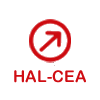MRI R2* captures inflammation in disconnected brain structures after stroke: a translational study
Résumé
Ischemic strokes disrupt brain networks, leading to remote effects in key regions like the thalamus, a critical hub for brain functions. However, non-invasive methods to quantify these remote consequences still need to be explored. This study aimed to demonstrate that MRIderived R2* changes can capture iron accumulation linked with inflammation secondary to stroke-induced disconnection.
In order to link remote R2* changes to stroke-induced disconnection, we first conducted a secondary analysis of 156 prospectively included stroke patients who underwent MRI at baseline and 1-year follow-up. We mapped fibers disconnected by baseline infarcts to compare the R2* changes over 1 year according to the disconnectivity status in specific thalamic nuclei groups. We also identified the predictors of elevated R2* at 1 year in a multivariate context through linear regressions. In parallel, to understand the biological underpinning of the remote R2* changes, we set up a translational mouse model through photothrombotic induction of focal cortical infarcts or sham procedures in 110 C57BL/6J mice. We explored the mice through combinations of in vivo MRI at 72h, 2-, 4-, and 8-weeks, histology, qPCR for gene expression, mass spectrometry for iron concentration quantification, and additional ex vivo high-resolution diffusion tensor imaging.
In stroke patients, we found a significant increase of R2* within severely disconnected medial and lateral thalamic nuclei groups from baseline to 1 year. At the same time, no change occurred if these structures were not disconnected. We also showed that the disconnectivity status at baseline was a significant predictor of R2* at follow-up, independently from confounders, establishing a direct and independent relationship between baseline disconnection and the subsequent R2* increase within the associated locations. In mice, we recapitulated the patients' conditions by observing increased R2* in the stroke groups, specifically within the disconnected thalamic nuclei. Such remote and focal R2* changes peaked at 2 weeks, preceding and correlating with longer-term atrophy at 8 weeks. We established that the remote R2* increase was spatially and temporally correlated with a significant increase of chemically determined iron load bound to ferritin within activated microglial cells.
This study provides critical evidence that R2* is a sensitive marker of inflammation secondary to network disconnection, potentially informing future neuroprotective strategies targeting remote brain regions after stroke.
Domaines
Neurosciences [q-bio.NC]| Origine | Fichiers produits par l'(les) auteur(s) |
|---|


